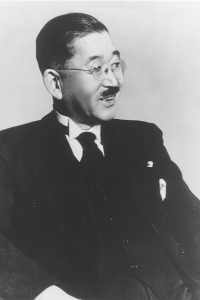The RIKEN Story
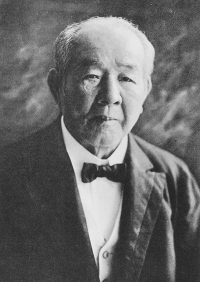
To turn the country from imitation to creative power, there is no alternative but to promote research in pure physics and chemistry, and for this we must establish an Institute of Physical and Chemical Research.
Eiichi Shibusawa
So wrote prominent businessman and industrialist Eiichi Shibusawa in a September 1917 article describing the steps leading to the creation of RIKEN.
Four years earlier, in June 1913, Shibusawa had gathered 120 leading figures from the private and public sectors together at Seiyoken, a Western-style restaurant in Tokyo, to listen to a speech given by well-known researcher Jokichi Takamine. Takamine had discovered adrenaline and is also remembered as one of the key people who donated Japanese cherry blossom trees to Washington, DC.
In his speech, Takamine argued that the world was moving away from mechanical industry toward scientific—meaning chemical and physical—industry, and urged Japan to establish a national research institute for the study of pure science.
Germany had just established the Kaiser Wilhelm Society, the United States had the Rockefeller Institute for Medical Research and the Carnegie Institution, and France had the Institut Pasteur. To compete in this world in movement, he argued, Japan had to create a research institute of its own.
RIKEN, the Institute of Physical and Chemical Research, was formally founded on March 20, 1917 by Shibusawa and leaders from various fields of research, modeled on the Kaiser Wilhelm Society, with an Imperial prince as President, and the mathematician Dairoku Kikuchi as its first Director.
The early years
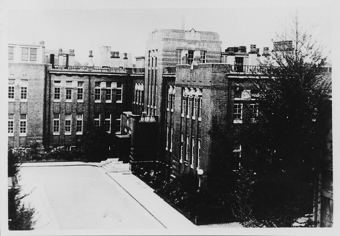
First RIKEN building in Komagome
After failing to obtain funding from the government, the founders of RIKEN turned to the private sector, and were able to raise approximately 2 million yen to get the project off the ground.
The new Institute of Physical and Chemical Research was established as a private foundation in the Komagome district of Tokyo. Unfortunately, the fledgling organization soon found itself in financial straits due to the economic turmoil and inflation that followed World War I. Unable to solicit funding from the private sector, Japan's first major pure science research institution looked to a decidedly bleak future.
A paradise for scientists
Things turned around for RIKEN in 1921 with the appointment of its third director, Masatoshi Okochi. Only 42 years of age at the time, Okochi was full of vision and determination. He set out to completely transform the underlying structure of RIKEN and erect in its place an institution like none other in Japan.
In 1922, just a year after taking office, Okochi abolished the Physics and Chemistry Divisions that had existed previously in RIKEN, and introduced a radically different system in its place. Under the new system, which exists to this day at RIKEN, each independent laboratory was directed by a Chief Scientist who was given considerable autonomy to manage research topics, personnel and budget.
The atmosphere which resulted from this structural change was described by Shinichiro Tomonaga, Nobel prize-winner in physics, as a "paradise for scientists". Tomonaga was a member of the Nishina Laboratory (now Nishina Center), famous for boldly venturing into new areas of unexplored science.
Another important decision that Okochi made was to set up a group of subsidiary companies that would commercialize breakthroughs made at RIKEN. This allowed RIKEN to grow steadily through the 1930s and early 1940s, nurturing in the process a new generation of young Japanese scientists. At the height this conglomerate contained 63 different companies.
Contributing to society
As RIKEN has essentially been established with the mission of promoting the advancement of Japan’s developing industries, contributing to society was always in its blood. Okochi’s establishment of subsidiary companies helped this process, but it had begun early on and continues today.
RIKEN played a central role in the creation of the first air conditioning system in Japan with its invention of Adosoru, a substance that absorbs moisture and promotes drying, made from a special type of clay that is highly porous and absorbent. This system was used to cool Hogakuza, a Tokyo theater that could seat 1,000 people.
Another important early invention was KS Steel, which was developed by physicist Kotaro Honda, who opened his RIKEN-Honda Laboratory at Tohoku Imperial University in 1922. It was a permanent magnetic steel with three times the magnetic resistance of tungsten steel.
Vitamins were another area where RIKEN made a splash. Researcher Umetaro Suzuki, the father of vitamin research in Japan, was the earliest to identify a vitamin with his discovery in 1910 of aberic acid, today known as vitamin B1. As a chief scientist at RIKEN he helped to produce vitamins that become popular commercial products, helping the institute prosper.
RIKEN continues to develop products that contribute to society. Some examples are VAAM, a vitality drink that was established based on research on Asian giant hornets, and the plants bred by Tomoko Abe’s laboratory in the Nishina Center for Accelerator-Based Science using the RI Beam Factory.
The war years
On December 8, 1941, Japan entered World War II with the attack on Pearl Harbor. In April of the same year, the Japanese army’s air force had requested Masatoshi Okochi to begin a project to build an atomic bomb. Yoshio Nishina’s lab, the Mecca of nuclear physics in Japan, was entrusted with the enrichment of uranium for the project.
But American air raids in April 1945 destroyed two-thirds of RIKEN's buildings and facilities, including Nishina's apparatus for enriching uranium, putting an end the project.
On August 15, 1945, the war ended. In September 1945, the US forces started investigating Japan’s atomic bomb program and decided to destroy the two cyclotrons Nishina had spent 10 years building and to dump them into Tokyo bay.
Collapse and rebirth
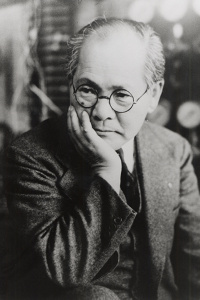
Yoshio Nishina
The end of World War II marked a sudden and devastating end to an era of rapid expansion at RIKEN. In 1948, Masatoshi Okochi was arrested as a suspected war criminal, and although he was released he could no longer serve as RIKEN’s director. The conglomerate was dissolved, and RIKEN itself was saved from completely closing its doors largely thanks to the support of one American scientist, Harry C. Kelly, and his friendship with new RIKEN director Yoshio Nishina.
RIKEN reopened as a private company under the name KAKEN in 1948. Its leaders tried to make ends meet by selling pharmaceuticals and licensing discoveries, but it was a difficult time. In 1958, the institute was given a new status as a public corporation, and the name was changed back to RIKEN again. With this, RIKEN was able to return to the forefront of Japanese science and technology.
In the midst of these difficult years, however, there were good times. 1949 was an important year as Hideki Yukawa, who had studied in Yoshio Nishina's laboratory, became the first Japanese to receive a Nobel Prize. He later served as a chief scientist, establishing a laboratory dedicated to theoretical physics in 1961.
RIKEN moves
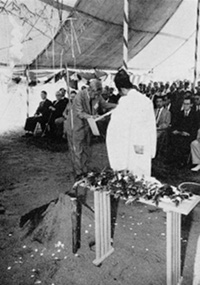
Opening ceremony at Wako
In 1967, just as it celebrated its 50th anniversary, RIKEN relocated to a large 2.34 square kilometer plot of state-owned land in Wako, in the outskirts of Tokyo, marking the start of a new era in Japanese science.
With its new headquarters secured, RIKEN moved to establish satellite institutions at other locations in Japan.
Modeled on the Max Planck Society in Germany, the satellite institutions were to be located across the country, each focusing on specific fields of research. The Tsukuba Institute, opened in October 1984 to promote gene research, was the first of these satellites. Today, Tsukuba is the location of the BioResource Center, which provides resources to researchers doing work in life science. In 1990, a laboratory dedicated to photonics research was established in Sendai, and in 1993 a laboratory dedicated to robotic research was set up in Nagoya. A series of larger campuses were then set up. In 1998, a center dedicated to genomic science was established in Yokohama. It participated in the decoding of the human genome, which was completed in 2003. Today, Yokohama is a large campus with three centers, working on medical science, life science technology, and sustainable resource science. In 2000, a center focusing on developmental biology was established in Kobe, and today Kobe has, in addition, centers working on life science technology, supercomputing, and quantitative biology.
Those years also saw the establishment of RIKEN’s first bases overseas, first at the Rutherford Appleton Laboratory (RAL) in the United Kingdom, and at Brookhaven National Laboratories (BNL) and MIT in the United States. Later, RIKEN set up offices in Singapore in 2006 and Beijing in 2011.
The satellite institutional structure that RIKEN has today stands out in comparison to the "small science" of its postwar period, when the majority of government's science budget was funneled toward the big projects of atomic energy and space exploration. From a long and proud tradition of creative small science projects, RIKEN launched itself into big science, with major projects including the Radioisotope Beam Factory in Wako with its Superconducting Ring Cyclotron, the SPring-8 synchrotron facility and SACLA X-ray free electron laser in Harima, the BioResource Center in Tsukuba, and the powerful K computer in Kobe. Thanks to the satellite system, RIKEN today conducts research across all fields of science, from physics and chemistry to engineering and life sciences, and from basic research to practical applications. The Cluster for Industry Partnership, established in 2010, focuses on returning the fruits of RIKEN's research to society.
Independent administrative institution
In October 2003, Nobel laureate Ryoji Noyori assumed the presidency of RIKEN as the institution was reorganized as an independent administrative institution under the Japanese Ministry of Education, Culture, Sports, Science and Technology.
National Research and Development Institute
In April 2015, RIKEN acquired a new status, this time as a National Research and Development Institute. At the same time, President Noyori stepped down, to be succeeded by Hiroshi Matsumoto, former president of Kyoto University. The following year, RIKEN was chosen to be one of three Designated National Research and Development Institutes, immediately before the institute celebrated its centennial in 2017. 2016 was also an exciting year as a RIKEN-led team named the first chemical element, nihonium, to be discovered in Asia.

